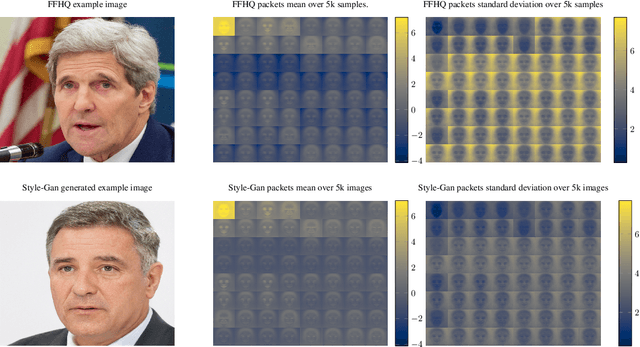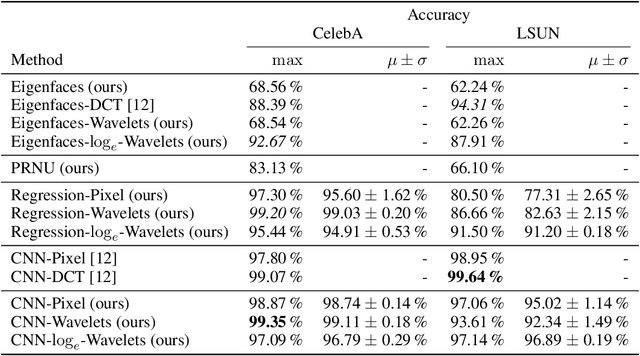Wavelet-Packet Powered Deepfake Image Detection
Paper and Code
Jun 17, 2021



As neural networks become more able to generate realistic artificial images, they have the potential to improve movies, music, video games and make the internet an even more creative and inspiring place. Yet, at the same time, the latest technology potentially enables new digital ways to lie. In response, the need for a diverse and reliable toolbox arises to identify artificial images and other content. Previous work primarily relies on pixel-space CNN or the Fourier transform. To the best of our knowledge, wavelet-based gan analysis and detection methods have been absent thus far. This paper aims to fill this gap and describes a wavelet-based approach to gan-generated image analysis and detection. We evaluate our method on FFHQ, CelebA, and LSUN source identification problems and find improved or competitive performance.
 Add to Chrome
Add to Chrome Add to Firefox
Add to Firefox Add to Edge
Add to Edge